A Randomized Pilot Clinical Assessment Of Three Skincare Regimens On Skin Conditions In Infants
- PMID: 31908513
- PMCID: PMC6930520
- DOI: 10.2147/CCID.S204216
A Randomized Pilot Clinical Assessment Of Three Skincare Regimens On Skin Conditions In Infants
Abstract
Introduction: Few data are available on the comparison between the effects on infant skin of skin care products and those of water alone.
Patients and methods: In this single-center, evaluator-blind, parallel-group pilot study, healthy infants were randomized to near-daily washing for 12 weeks (starting in the summer and finishing in the winter months) with a mild liquid baby wash followed by use of baby lotion (wash+lotion), water followed by baby lotion (water+lotion), or water alone. Clinical and instrumental assessments of skin moisturization and barrier function were made.
Results: As expected the skin condition in all groups was affected by the change of the season. The skin of infants in all groups was mildly deteriorated (clinical grading) and with reduced moisture levels and increased barrier function. Instrumental measurements indicated that skin moisture and barrier function were better maintained in the wash+lotion and water+lotion groups than in the water-only group at week 12. Clinical assessment scores increased slightly over 12 weeks in all groups (P<0.05). At week 12, the wash+lotion group (n = 44) had significantly less change from baseline in overall skin condition and softness (lower scores) than did the water+lotion (n = 43) or water-only (n = 43) groups. The wash+lotion regimen maintained stable erythema and rash scores with lower mean values over time than in the other groups.
Conclusion: A regimen of a liquid baby wash and a baby skin lotion for 12 weeks resulted in less detrimental changes in instrumental and clinical measures of skin than using water and lotion or water alone.
Keywords: emollients; erythema; exanthema; infant; skin abnormalities.
© 2019 Duan et al.
Conflict of interest statement
YYD, CG, and F-QK were employees of Johnson & Johnson at the time this study was conducted. YYD and F-QK are no longer employed at Johnson & Johnson. C-PS and LM received research support in association with this study. The authors report no other conflicts of interests in this work.
Figures

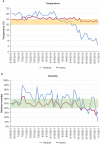




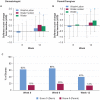
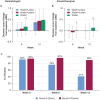
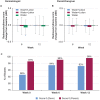

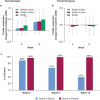
References
-
- Walters RM, Khanna P, Chu M, Mack MC. Developmental changes in skin barrier and structure during the first 5 years of life. Skin Pharmacol Physiol. 2016;29(3):111–118. - PubMed
-
- Nikolovski J, Stamatas GN, Kollias N, Wiegand BC. Barrier function and water-holding and transport properties of infant stratum corneum are different from adult and continue to develop through the first year of life. J Invest Dermatol. 2008;128(7):1728–1736. - PubMed
-
- Walters RM, Fevola MJ, LiBrizzi JJ, Martin K. Designing cleansers for the unique needs of baby skin. Cosmetics Toiletries. 2008;123(12):53–60.
-
- Ananthapadmanabhan KP, Yu KK, Meyers CL, Aronson MP. Binding of surfactants to stratum corneum. J Soc Cosmet Chem. 1996;47:185–200.
LinkOut - more resources
Full Text Sources
Research Materials

